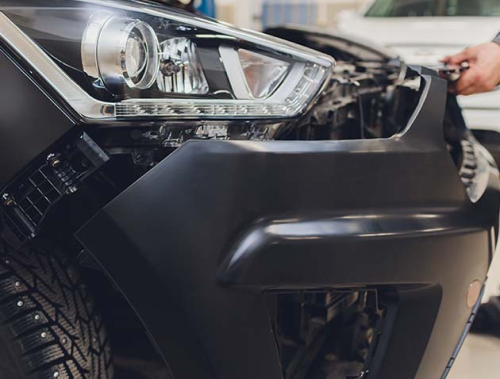Winter driving presents unique challenges, particularly for those new to driving or having recently moved to areas with harsh winter conditions. Navigating icy roads, heavy snowfall, and reduced visibility can be daunting. This guide aims to equip new drivers with practical advice and safety tips to help them confidently handle winter driving. Developing strong winter driving skills is essential not just for your safety, but also for the safety of others on the road.
Pre-Winter Vehicle Preparation
Before the first snowfall, ensuring your vehicle is ready to handle winter’s harsh conditions is crucial. Proper preparation can make a significant difference in your safety and driving experience during the colder months.
Vehicle Inspection Checklist
A thorough vehicle inspection before winter sets in can help prevent breakdowns and accidents. Here’s a checklist to guide you through the process:
- Tires: Winter tires are a must-have in snowy and icy conditions. They provide better traction than all-season tires, helping you maintain control of your vehicle. It’s also essential to regularly check your tire pressure, as cold temperatures can cause it to drop. Additionally, ensure your tires have adequate tread depth—at least 6/32 inches is recommended for winter driving.
- Fluids: Winter weather can be tough on your vehicle’s fluid levels. Make sure your antifreeze is topped up to prevent your engine from freezing. Switch to a winter-grade windshield washer fluid that won’t freeze in low temperatures. Also, check your oil levels and consider using a thinner, winter-grade oil that flows more easily in cold conditions.
- Battery: Cold weather can reduce your battery’s power, so it’s essential to check its charge and overall condition before winter arrives. If your battery is more than three years old, consider having it tested to ensure it won’t leave you stranded in the cold.
- Lights: With shorter days and longer nights, having fully functional lights is crucial. Check all headlights, brake lights, and indicators to ensure they are working correctly. Clean your lights regularly to remove any dirt or snow buildup that could reduce visibility.
- Brakes: Winter roads demand your brakes to be in top condition. Have your brake pads inspected for wear and ensure your brake fluid is at the proper level. Well-maintained brakes are essential for safe driving, especially when roads are slippery.
Winter Emergency Kit Essentials
Being prepared for an emergency is a vital part of winter driving. An emergency kit tailored for winter conditions can be a lifesaver if you find yourself stranded or facing unexpected difficulties on the road.
- What to Include: Your emergency kit should include basic items like blankets, a flashlight with extra batteries, a first-aid kit, jumper cables, an ice scraper, a shovel, and traction aids like tire chains or mats. These essentials can help you stay safe and warm if you get stuck or need to make minor repairs.
- Winter-Specific Items: In addition to the basics, consider adding some winter-specific items to your kit. A bag of sand or cat litter can provide extra traction if your tires get stuck on ice. Pack extra clothing, such as gloves, hats, and socks, to keep warm if you need to spend time outside your vehicle. Non-perishable snacks and bottled water are also good to have on hand, especially if you end up waiting for help in a remote area.
Essential Winter Driving Techniques
Driving in winter conditions requires a different approach compared to other times of the year. Snowy and icy roads present unique challenges, and adopting the right techniques can make all the difference in staying safe. Below are essential driving tips to help you navigate winter roads with confidence.
Driving on Snowy and Icy Roads
Snowy and icy roads can be treacherous, especially if you’re not accustomed to driving in such conditions. The key is to drive cautiously and be prepared for sudden changes in the road surface.
- Slow and Steady: One of the most important rules for winter driving is to reduce your speed. Ice and snow can significantly reduce traction, making it harder to stop or turn. By slowing down, you increase your control over your vehicle and reduce the risk of skidding. Additionally, increase your following distance to allow more time to react to sudden stops or changes in traffic.
- Braking Techniques: Braking on icy roads requires a gentle touch. If your vehicle doesn’t have an Anti-lock Braking System (ABS), avoid slamming on the brakes, as this can cause your wheels to lock up, leading to a skid. Instead, pump the brakes gently to maintain control. If you do have an ABS, apply steady pressure to the brake pedal— the ABS will prevent the wheels from locking and help you maintain steering control.
- Steering Control: If you start to skid, it’s important to remain calm and steer in the direction you want the front of your vehicle to go. This technique, known as “steering into the skid,” helps you regain control. Avoid overcorrecting, which can cause your vehicle to spin out. Instead, steer smoothly and keep your movements gentle.
Navigating Common Winter Driving Scenarios
Different driving scenarios present unique challenges in winter, and knowing how to handle them can help you stay safe on the road.
- Uphill and Downhill Driving: When driving uphill on a slippery slope, it’s crucial to maintain a steady speed to prevent your tires from spinning. If you feel your vehicle losing traction, gently ease off the accelerator until you regain control. When driving downhill, reduce your speed before starting the descent and use a lower gear to help control your speed without over-relying on the brakes, which can cause skidding.
- Handling Curves: Navigating curves in winter requires extra caution. Approach curves at a slower speed than usual and avoid braking while turning, as this can lead to loss of control. Instead, brake gently before entering the curve and coast through it while steering smoothly. Keep your movements fluid to maintain traction and stability.
- Intersections: Intersections can be particularly dangerous in winter, as they are often more slippery due to the frequent stopping and starting of vehicles. As you approach an intersection, begin slowing down well in advance. Avoid sudden stops, which can cause your vehicle to slide. If the intersection is icy, coast through it at a low speed without accelerating or braking.
Emergency Situations and How to Handle Them
Despite your best efforts, winter driving conditions can sometimes lead to emergencies. Knowing how to handle these scenarios can keep you safe and help you get back on the road quickly.
What to Do If You Get Stuck
Getting stuck in the snow or on ice is a common winter driving issue, but it can be managed with the right approach.
- Staying Calm: The first and most important step is to stay calm. Panicking can lead to poor decisions that may worsen the situation. Take a deep breath and assess your surroundings before taking action.
- How to Get Unstuck: If your vehicle gets stuck, avoid spinning your wheels excessively, as this can dig you in deeper. Instead, try to gently rock your vehicle back and forth by shifting between forward and reverse gears, giving it light gas each time. If you have traction aids like sand, cat litter, or traction mats, place them under your drive wheels to help gain traction. If these methods don’t work, it may be best to call for roadside assistance.
Dealing with Reduced Visibility
Winter weather often brings reduced visibility due to fog, heavy snow, or the early onset of darkness. Adjusting your driving to these conditions is crucial for safety.
- Fog and Heavy Snow: In fog or heavy snowfall conditions, slow down and increase your following distance. Use low beams rather than high beams, as high beams can reflect off the fog or snow, making it harder to see. Ensure your windshield wipers and defroster are in good working order to keep your view clear.
- Night Driving: Night driving in winter requires extra caution due to reduced visibility and the potential for black ice. Drive at a slower speed, especially on unfamiliar roads, and use your headlights to illuminate as much of the road ahead as possible. If you encounter oncoming traffic, switch to low beams to avoid blinding other drivers and reducing your visibility.
Legal and Safety Considerations
Winter driving isn’t just about mastering techniques and being prepared—it’s also important to understand the legal and safety considerations that come with driving in harsh conditions. Knowing the laws and adopting a defensive driving mindset can help ensure you stay on the right side of the law and protect yourself and others on the road.
Winter Driving Laws
Winter driving laws vary depending on where you live or where you may be traveling. Understanding these regulations can help you avoid fines and keep you safe.
- Regional Laws: In some areas, especially those prone to heavy snowfall and ice, specific laws require the use of winter tires or chains during certain months. For instance, in regions like Quebec, Canada, winter tires are mandatory from December 1 to March 15. In the U.S., states like Colorado have traction laws that require vehicles to have snow tires, carry chains, or be equipped with four-wheel drive when driving through certain mountainous areas. It’s essential to familiarize yourself with the local laws in your area or any region you plan to travel through during winter.
- Insurance Requirements: Winter conditions can increase the likelihood of accidents, so it’s vital to ensure your insurance policy covers winter-related incidents. Some policies may require additional coverage for accidents caused by winter weather, or offer specific provisions for incidents like sliding off the road due to ice. Review your policy and consider talking to your insurance provider to ensure you’re fully covered before winter hits.
Importance of Defensive Driving
Defensive driving is always important, but it becomes even more crucial during winter when road conditions are unpredictable. Being proactive and cautious can help prevent accidents and keep you safe.
- Anticipating Other Drivers: Winter conditions affect all drivers differently, and not everyone on the road will be as cautious as you. Some drivers may be overly confident or unaware of how dangerous icy or snowy conditions can be. It’s important to expect the unexpected—assume that other drivers may not stop as quickly as you can or might slide through intersections. Keep a safe distance from other vehicles and be prepared for sudden stops or swerves.
- Avoiding Aggressive Driving: Patience is key when driving in winter conditions. Aggressive driving, such as tailgating, speeding, or quickly changing lanes, increases the risk of accidents. In winter, it’s important to give yourself and others extra time and space on the road. Avoid rushing, even if you’re running late—arriving safely is more important. Also, be mindful of road rage; if another driver is being aggressive, it’s best to let them pass and maintain a safe distance.
Conclusion
Winter driving presents unique challenges, but with the right preparation and mindset, you can navigate these conditions safely. Let’s recap the key tips for driving in winter:
- Pre-Winter Vehicle Preparation: Ensure your vehicle is ready for winter by checking tires, fluids, battery, lights, and brakes. Keep an emergency kit in your car with essential winter-specific items.
- Essential Winter Driving Techniques: Drive slowly and steadily on snowy and icy roads, use proper braking techniques, and know how to handle common winter driving scenarios such as uphill driving and navigating curves.
- Emergency Situations: Stay calm if you get stuck, use traction aids wisely, and adjust your driving to deal with reduced visibility in fog, heavy snow, and at night.
- Legal and Safety Considerations: Familiarize yourself with regional winter driving laws and ensure your insurance policy covers winter-related incidents. Practice defensive driving by anticipating the actions of other drivers and avoiding aggressive driving.








